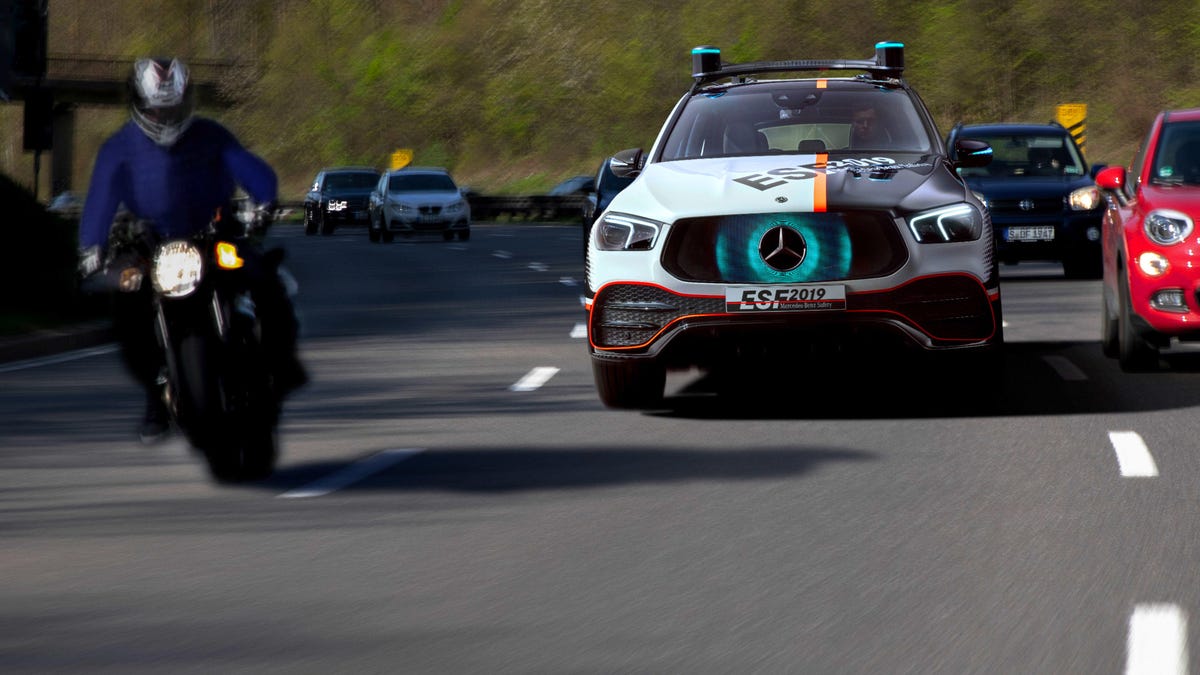Mercedes-Benz Experimental Safety Vehicle shows off the future of passenger protection
It's capable of Level 4 autonomy, sure, but the rest of its tech is definitely worth your attention.

The idea of the Mercedes-Benz Experimental Safety Vehicle, which previews life-saving technologies that could show up in future production cars, has been around for decades. And now, there's a new one.
Mercedes-Benz on Monday unveiled the Experimental Safety Vehicle for 2019. It will make its first debut at a convention in The Netherlands, but it will be shown to the public for the first time at the Frankfurt Motor Show in September. This concept car is all about safety -- whether the tech seems imminent for implementation or the far-off things of dreams, Mercedes-Benz is showing off ways in which the vehicle can be made even safer for everyone.
It doesn't take a keen eye to notice the hardware scattered about the exterior that will enable vehicle autonomy. While the concept is operating in autonomous mode (it can also be human-driven), the wheel and pedals retract to reduce the chance of injury in a collision. When the robots are in charge, a display on the front grille communicates the vehicle's intent to other drivers, letting them know when the vehicle is giving way. In addition to the front grille screen, it can also project animations and symbols onto the rear windshield.
When the human is in charge, there are little touches like sun visors that emit "daylight-like light" to keep the driver alert, a clever touch that has proven its efficacy in a scientific study.
All the orange bits light up to help others see your vehicle when, for example, you're poking out of an alleyway.
The floor is padded, and the airbag is located in the dashboard, so it can still deploy when the wheel is retracted. The side airbags are "three-dimensional," providing a cushion that completely surrounds the occupants as they deploy. There's even an airbag between the front occupants to prevent human-to-human contact during a crash.
Mercedes-Benz also introduced some safety systems specifically for kids in child seats. The seats connect to the vehicle via radio; when the sensors suggest a problem is imminent, such as when the vehicle enters a skid, the child seats can tighten their seatbelts and boost side-impact protection. The system can also tell a vehicle owner if the seat has been installed improperly. Hell, the seats can even monitor a child's temperature and pulse to let the driver know if the baby in the back is waking up. There's also a camera to keep an eye on the little ones in rearward-facing seats.
There's even more. If the car detects a rear-end collision, it can potentially move the car forward before the crash, giving the driver behind a little extra room to (hopefully) come to a stop without contacting anyone. If the pilot reaches a curve at high speeds, the belts can tighten for a little extra safety. Speaking of seat belts, Mercedes-Benz envisioned them as being pivotal to vehicle operation, disabling the USB port until the belts are buckled. It also made a heated seatbelt to convince occupants to ditch thick coats, improving safety by bringing an occupant's body closer to the belt itself.
It's quite the wild concept, even though it's aimed entirely toward safety, an arena that might not generate the most crowd-wowing innovations. Nevertheless, the ESV is proof that Mercedes-Benz is still working to improve vehicle safety, even as the robots begin their takeover.

